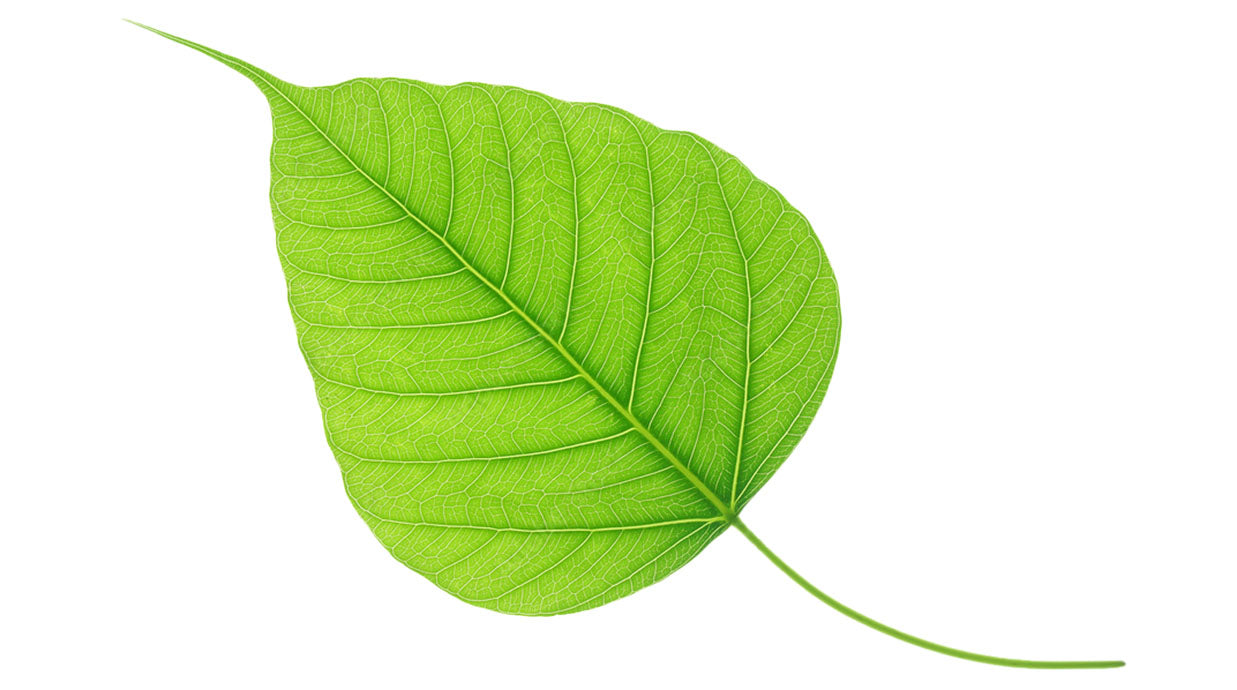
The concept behind the “Sacred Peepal” design.
“I am Ashwattha among all trees...” -
‘Ballad Divine : Bhagavad Gita, By Dev Bhattacharya
Vedas call it Ashvattha – the shade that provides rest for the divine horse, Tamils call it the Arasa Maram – the king of trees. Bhagvat Gita calls the tree as the manifestation of Krishna. Atharvana Veda calls the tree, the Amrita of the World. Siddhartha Gautama meditated under the tree and became the Buddha, was then called as The Bodhi tree.
In the Indian context, the peepal tree has a lot of importance in terms of divinity and medicinal properties.
This time my inspiration is the sacred ‘Peepal Tree’.
Vani Vrtti's design philosophy is 'Inspiration from Nature'.
While I was studying at NIFT Delhi, I remember, the tree which shaded the campus main gate was a peepal tree. In those four years, I witnessed the tree change colours with the seasons that went by. A tender peepal leaf blooms light pink to a lemon green, then emerald and finally a deep bottle green. As it falls on the ground eventually, it turns yellow and dries out to the extent that you can clearly see its veins. Every phase of this seasonal transition has been an inspiration to me.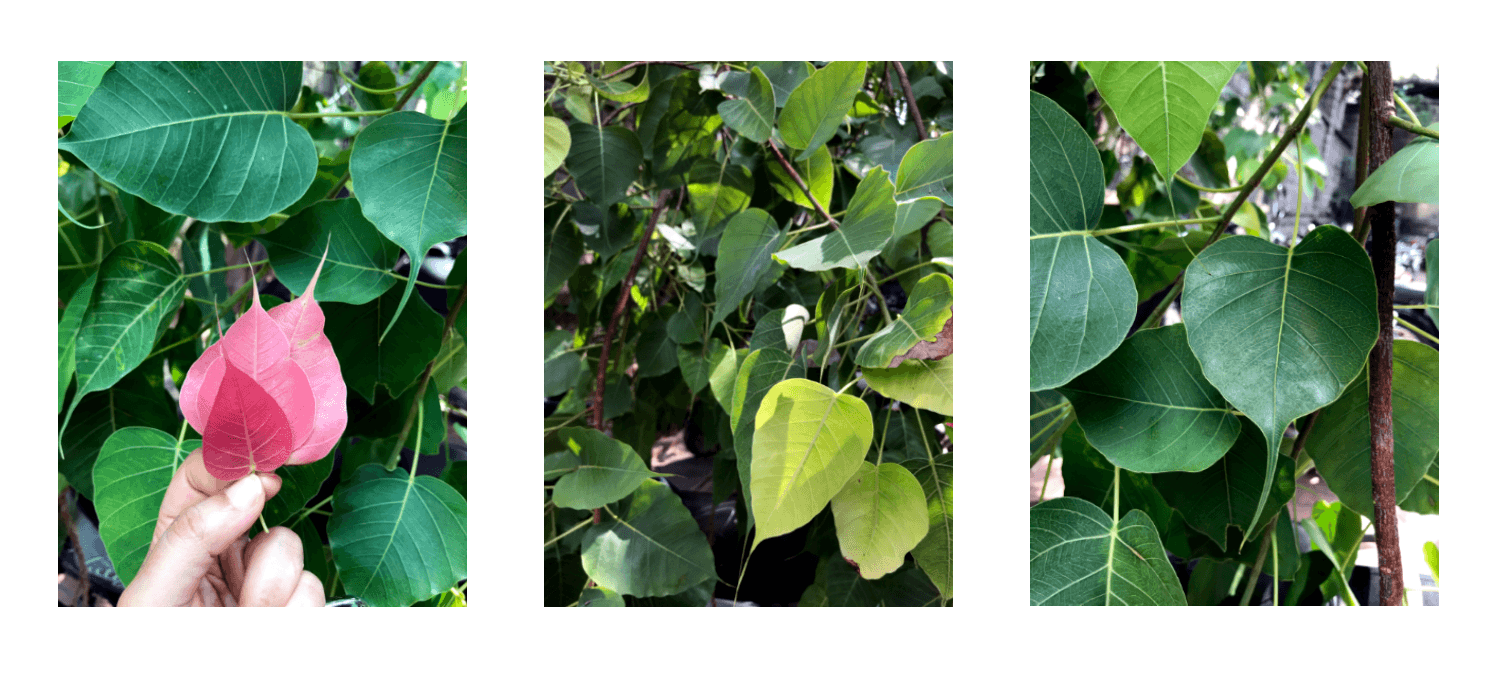
When I had started working with Khadi tussars, my first point of reference was the leaves that the wild tussar worm feeds on to form a cocoon. This design depicts a complete life cycle. Tussar is extracted from the cocoons which grow in forest trees; wild silkworms eat leaves and form the tussar cocoons. From the tussar cocoon, tussar yarns are extracted by women reeling it on their thigh. These handspun tussar yarns are used in the weaving of Vani Vrtti Gurubari Khadi Tussar Silk Handloom Sarees. The tussar silk yarns woven into a saree are actually leaf cellulose. While designing the saree I felt closer to nature like never before.
For this saree design, with ikkat leaves, I imagined the cycle of a tussar silkmoth that creates a wearable saree.

The technique of weft ikkat (resist tie and dye of yarns) on Khadi Tussar yarns is used to create the peepal leaf motif.
Ikkat on Khadi Tussar is a complicated technique that needs skilled hands, a calculative mind, and creative thinking. We work as a team to attain this precision.
Here is the stepwise procedure:
- Step 1: Graph the design.
- Step 2: Calculate the weft yarn distribution and repetition to tie the design.
- Step 3: Arrange the weft yarns on the ikkat frame.
- Step 4: Tie the design according to the graph with a master-line on both ends.
- Step 5: Remove the weft yarns from the ikkat frame and dye the lighter color first.
- Step 6: Once it dries, arrange the weft yarns on the ikkat frame and resist the lighter coloured design part.
- Step 7: Remove the weft yarns from the ikkat frame and dye with the final, deeper colour. (The ikkat yarn is tie-dyed as many times as the colours occur in the design)
- Step 8: Bobbins 🧵 are filled with the Ikkat weft yarns in a calculated manner.
- Step 9: Weave the ikkat design with precision by adjusting the master-line on the handloom.
- Step 10: Saree is removed from the loom and final finishing is done by knotting the tassels at the end of the palla.
Meet Benudhar Guin and his wife Indumati Guin, the skilled hands behind the "Sacred Peepal" design.
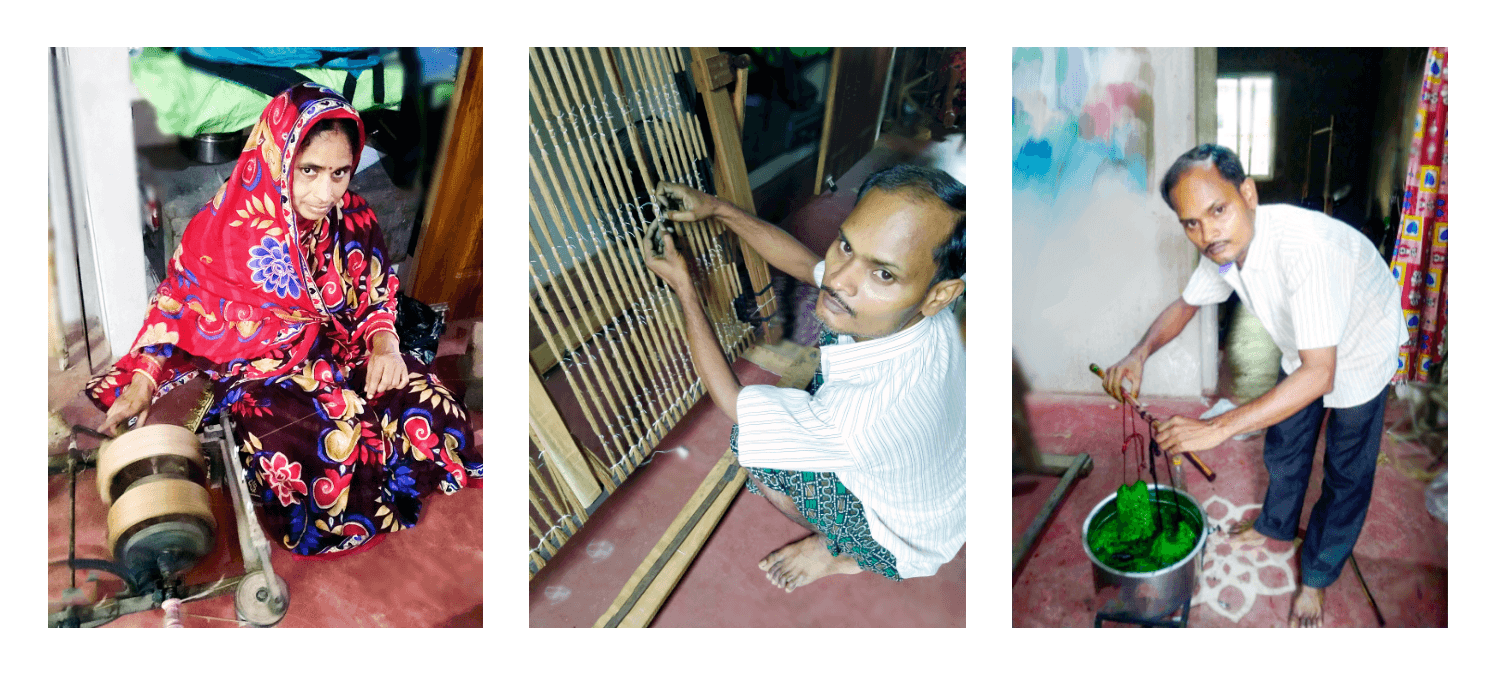
In the above picture, Indumati Guin is preparing the hanks of Khadi tussar yarns for the tie-dye process and masterweaver Benudhar Guin is tying the Khadi tussar yarns in the pattern of Peepal leaf and then dying the knotted weft yarns in a first lighter shade.
The colors are created almost near to the green of a real Peepal leaf. One can identify two greens, one is a lime green presenting a tender Peepal leaf green, and the other an emerald resembling a mature Peepal leaf green. 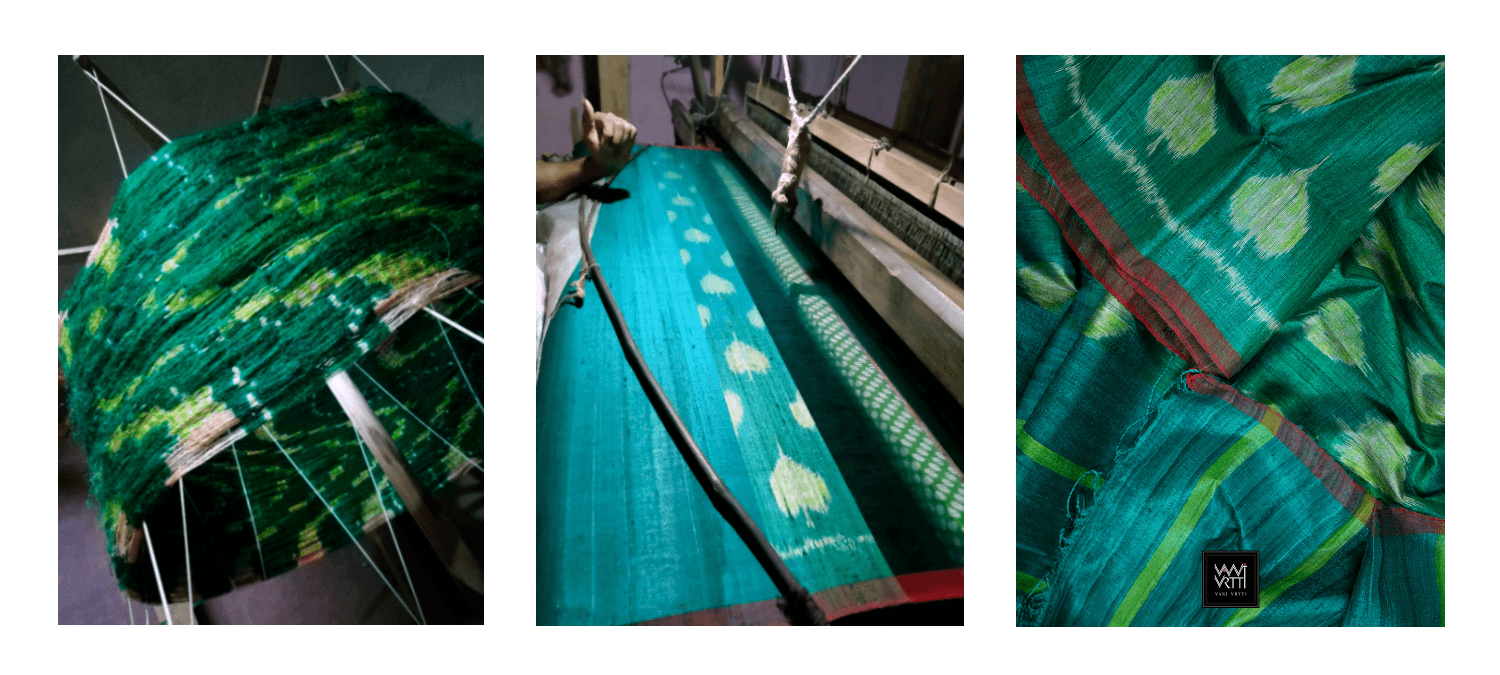 The Saree symbolizes a 'Sacred Peepal' Tree.
The Saree symbolizes a 'Sacred Peepal' Tree.
Here you can see the final results of the "Sacred Peepal" design draped by Saree Enthusiast Eeshita Joneja. https://www.instagram.com/eeshitajoneja/
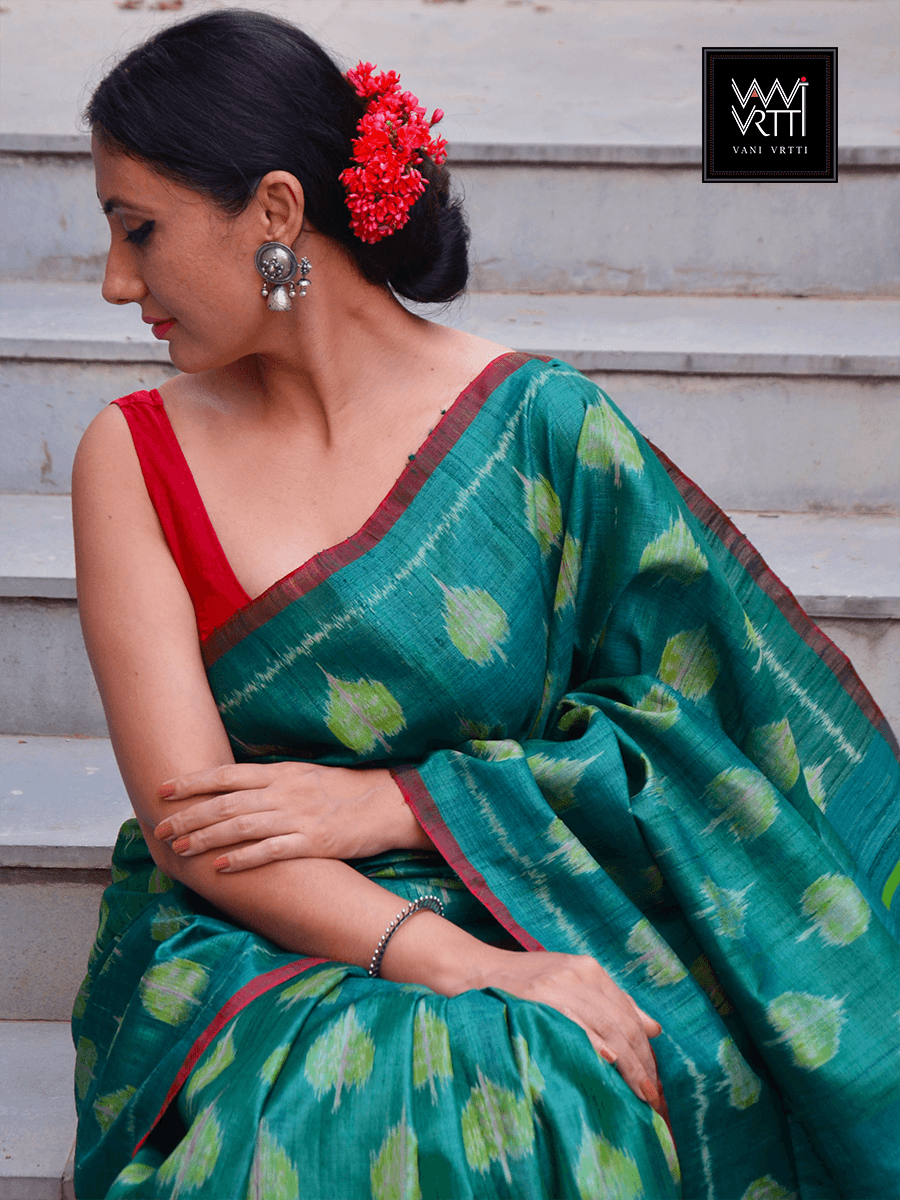 Click on this image to view more details.
Click on this image to view more details.
Reference website:
https://detechter.com/scientific-facts-about-peepal-tree-which-is-religiously-important-to-hindus/

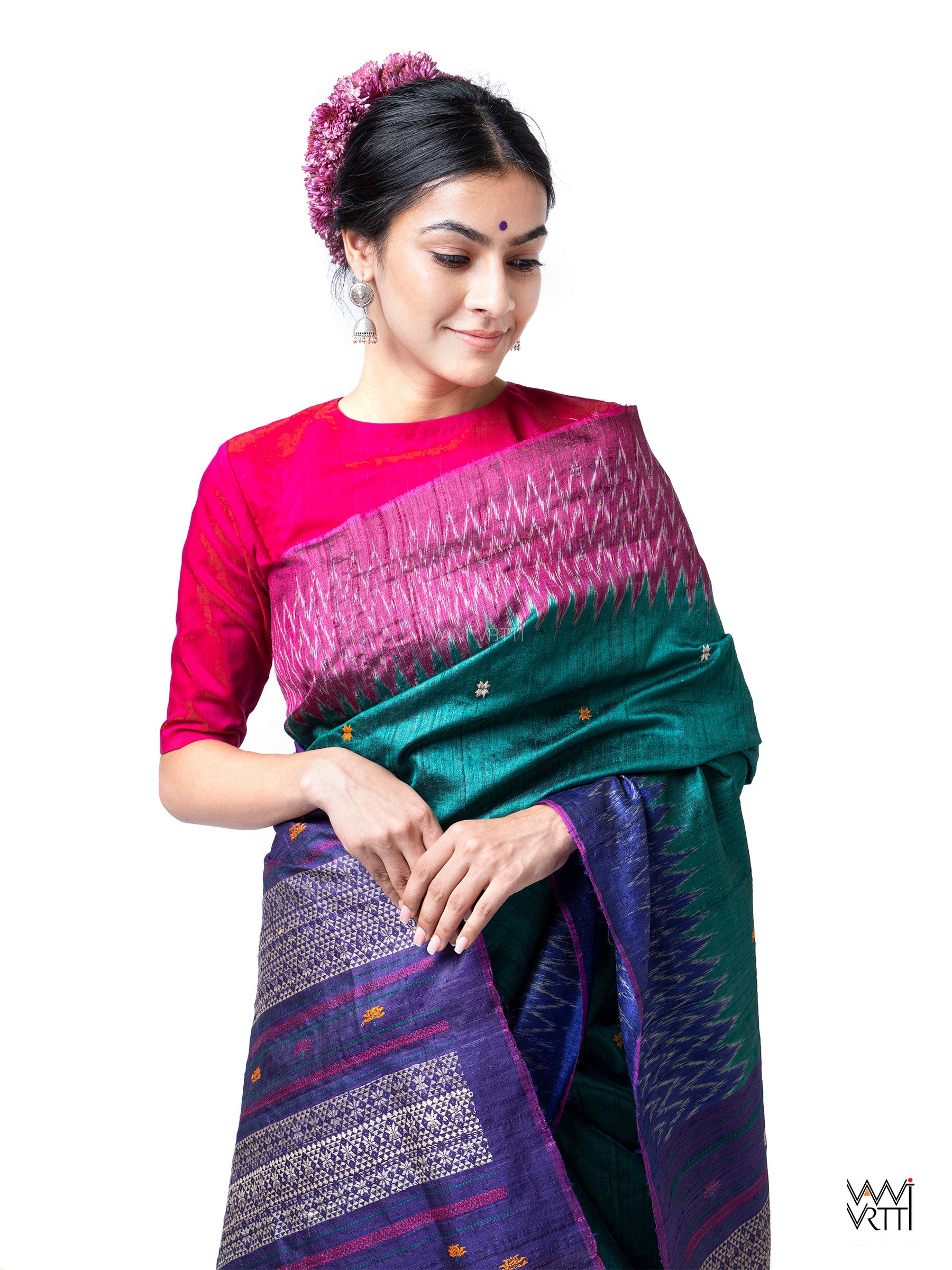
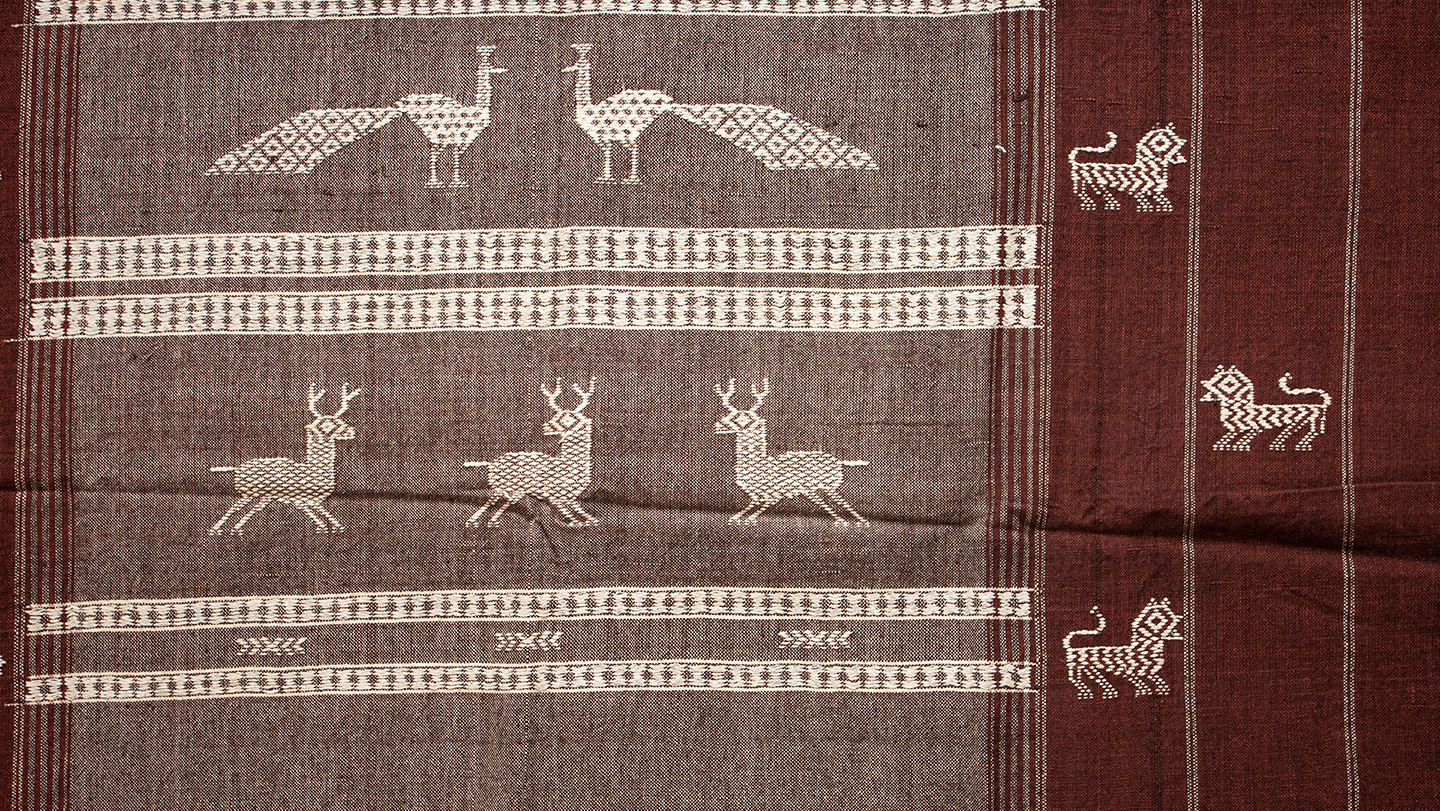

Leave a comment
This site is protected by reCAPTCHA and the Google Privacy Policy and Terms of Service apply.